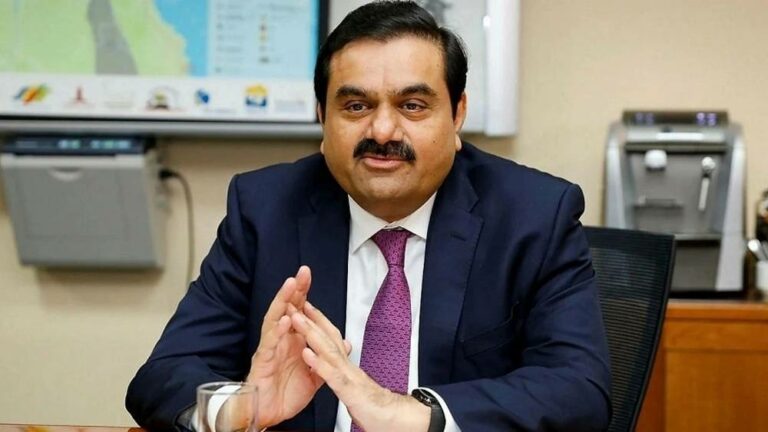The Adani Group will invest $100 billion over the next decade in new energy and digital spaces, which includes data centres. “As a group, we will invest over $100 billion of capital in the next decade. We have earmarked 70% of this investment for the energy transition space,” chairman and founder Gautam Adani said. Earlier, Adani Group had said that it will build three giga factories for manufacturing solar modules, wind turbines and hydrogen electrolysers as part of a $70-billion investment in clean energy by 2030. The Adani Group is already the world’s largest solar player.
$100 billion in new energy and digital spaces
“In addition to our existing 20 GW renewables portfolio, the new business will be augmented by another 45 GW of hybrid renewable power generation spread over 100,000 hectares – an area 1.4 times that of Singapore. This will lead to commercialisation of 3 million tonne of green hydrogen. Today, we can confidently state that we have a line of sight to first become one of the least expensive producers of the green electron, and thereafter the least expensive producer of green hydrogen,” Adani said.
“The Indian data centre market is witnessing explosive growth. This sector consumes more energy than any other industry in the world and, therefore, our move to build green data centres is a game-changing differentiator,” Adani said.
“We also just finished building the world’s largest sustainability cloud that already has a hundred of our solar and wind sites running on it – all off a single giant command and control centre that will soon be augmented by a global A-I lab,” he said. The Group’s plan to build 3 Giga factories – one for a 10 GW silicon-based photovoltaic value-chain will be backward-integrated from raw silicon to solar panels, a 10 GW integrated wind-turbine manufacturing facility and a 5 GW hydrogen electrolyser factory.
20th Forbes Global CEO Conference 2022 in Singapore
20th Forbes Global CEO Conference 2022 in Singapore got a theme from Gautam Adani who expressed confidence in India’s growth story. He in very clear wordings said that global turbulence has accelerated opportunities for India.
“It has made India one of the few relatively bright spots from a political, geostrategic, and market perspective. India is on the path to be the world’s third largest economy by 2030, and the fact is India’s real growth is just starting – as it goes from its 75th year of freedom this year – towards its 100th year of independence,” Gautam Adani said.
“Since independence, India took almost 58 years to reach the 1-trillion-dollar GDP mark. It then took 12 years to achieve our 2nd trillion dollars – and thereafter, only 5 years to achieve the 3rd trillion dollars. This rate will further accelerate as the digital revolution kicks in and transforms every type of activity at a national scale,” he iterated.
“We will be the country that will go from a 3 trillion-dollar economy to a 30 trillion-dollar economy, a country with a stock market capitalization of 45 trillion dollars, and a country that will be supremely confident of its position in the world,” he said.
“I anticipate that China, which was seen as the foremost champion of globalisation, will feel increasingly isolated. Increasing nationalism, supply chain risk mitigation and technology restrictions will have an impact,” Adani said. Adani said that going forward, China will feel more isolated as rising nationalism, shifts in supply chains and technology curbs threaten its economy. “India is now on the cusp of creating several thousands of entrepreneurs. For every unicorn that rises, the country will see the birth of dozens of micro-unicorns. So far, India’s growth has been driven by domestic investments; however, an economy needs both domestic as well as foreign direct investment. FDI inflow is likely to surpass $100 billion this year,” he added.
















